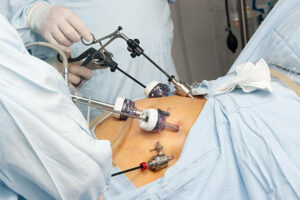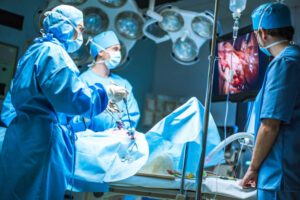
Laparoscopy also called as symptomatic and diagnostic laparoscopy is a surgical analytic method used to look at the organs inside the guts. It is a minimal invasive procedure with low risk factors. Just little entry points are made.

Laparoscopy utilizes an instrument called a laparoscope to take a look at the abdomen area. A laparoscope is a long, thin tube with a high-power light and a high-determination camera at the front. The instrument is embedded through an entry point in the abdominal area. As it moves along, the camera sends pictures to a video screen.
Read More :- https://blog.docopd.com/category/knee-replacement-surgery
Laparoscopy permits specialist to see inside patient body progressively without open surgery. Specialist additionally can acquire biopsy tests amid this system.
Laparoscopy is regularly used to distinguish and analyze the stomach or pelvic pain. It’s normally performed when other, noninvasive techniques can’t assist with analysis.

Consultant specialist can detect the following defects and abnormalities with the help of laparoscopy-
Compared with customary open surgery, patients regularly encounter less pain, a shorter recuperation and recovery period and less scarring with laparoscopic surgery.
The most widely recognized risk related with laparoscopy is bleeding and contamination. These are uncommon events. After the surgical procedure, it’s vital to look for any indications of contamination. Contact with specialist in the event that patient encounter:
There’s additionally a little danger of harm to the organs being inspected during laparoscopy. Blood and other fluids may spill out from body if an organ is punctured. For this situation patient will require other surgery to repair the harm.
After the operation patient may encounter torment at the site of the surgery. Consultant may recommend pain and anti-inflammatory medication.
Patient will typically experience a postoperative care program with guidelines to help patient recoup from the surgery.

It is critical that patient should follow the recovery rules after surgery given by specialist.
t the point when the surgery is over, you’ll be watched for a few hours before you’re discharged from the doctor’s facility. Your fundamental signs, such you’re breathing and heart rate, will be observed nearly. Doctor’s facility staff will likewise check for any unfavorable responses to the anesthesia or the strategy, and additionally screen for delayed dying.
laparoscopy has revolutionized the medical field by providing a less invasive, safer, and more efficient alternative to traditional open surgery. Its myriad applications across various medical specialties have improved patient outcomes and overall healthcare efficiency.
Best Health Packages Information visit here:- https://www.docopd.com/en-in/lab